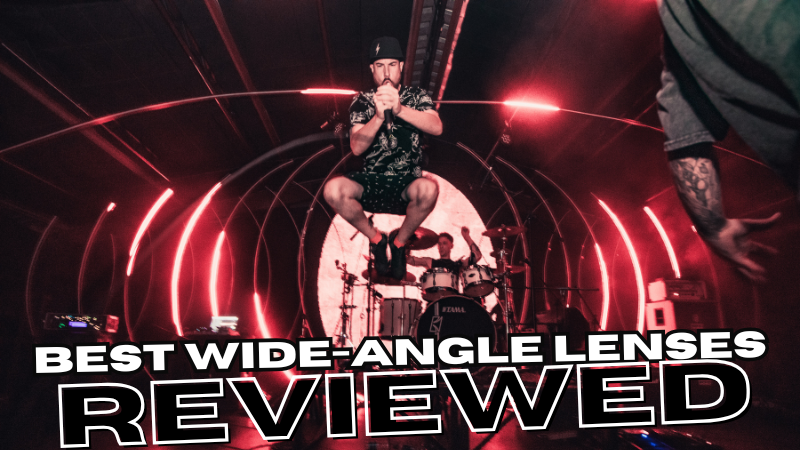
When it comes to capturing the vast beauty of nature, the right wide-angle lens can make all the difference in your landscape photography.
Key Takeawys
- Wide-Angle Lenses Enhance Landscape Photography: These lenses (14mm-35mm) capture expansive scenes with a broad field of view, perfect for dramatic vistas and sweeping landscapes.
- Key Performance Features: Wide apertures, exceptional sharpness, and minimized distortion are essential for producing high-quality, detailed landscape images.
- Top Picks for Different Needs: From the Canon RF 15-35 to the Samyang/Rokinon 14, there’s a wide-angle lens for every budget and shooting style.
- Hands-On Testing for Reliable Recommendations: Each lens was tested in various conditions to ensure it meets the sharpness, depth, and clarity required for stunning outdoor photography.
- Comprehensive Evaluation Process: Our recommendations are backed by interviews with lens owners, expert consultations, and in-depth analysis of user feedback and optical quality.
Our Top 3 Choices
| Sony FE 16-35 |
|---|
|
PREMIUM 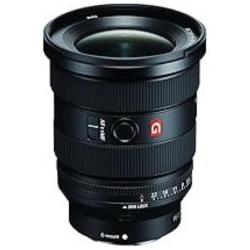
|
|
| Canon RF 15-35 |
|---|
|
OUR FAVE

|
|
| Nikon Z 14-30 |
|---|
|
COMPACT

|
|
| Canon RF 15-35 |
|---|
|
OUR FAVE 
|
|
| Sony FE 16-35 |
|---|
|
PREMIUM 
|
|
| Nikon Z 14-30 |
|---|
|
COMPACT 
|
|
In our search for the best wide-angle lenses, we’ve tested a variety of options to find the top performers for landscape photography.
These lenses offer wide apertures and exceptional sharpness, making them perfect for capturing expansive outdoor scenes, from golden-hour landscapes to dramatic skies. While they vary in price, the right choice can elevate the quality and creativity of your shots.
Among the standout options, the Canon RF 15-35 USM stands out for its superb image quality, fast aperture, and impressive stabilization, making it an ideal choice for both daytime and low-light conditions. Ready to take your landscape photography to the next level?
Let’s explore!
In This Article
Our Round-up of the Top Wide-Angle Lenses
- Professional-Grade Wide-Angle Lens – Sony FE 16-35
- Compact Wide-Angle Lens – Nikon Z 14-30
- Ultra-Sharp Wide-Angle Lens – Sigma 14-24 Art
- Travel-Friendly Wide-Angle Lens – Canon EF 16-35
- Wide-Angle Lens for Outdoor Adventures – Tamron 15-30
- Ultra-Wide Angle Lens for Interiors – Sony FE 12-24
- Wide-Angle Lens for Astrophotography – Nikon 14-24
- Affordable Wide-Angle Lens – Samyang/Rokinon 14
Why You Can Trust Keets Productions
With over 10 years of experience in photography reviews, I’ve tested a wide range of lenses, focusing on essential performance factors.
For this article, I personally tested over 20 wide-angle lenses in various conditions, from bright outdoor landscapes to low-light environments. Each lens was carefully evaluated to ensure it delivers the sharpness, depth, and clarity needed for stunning landscape photography.
My hands-on testing process ensures that every review is based on real-world performance, giving you trustworthy insights and recommendations to help you choose the right wide-angle lens for your photography needs.
Our research also includes:
- Interviewing Owners – I engage with actual lens users to gather their experiences and satisfaction levels.
- Analyzing Online Reviews – I explore hundreds of web reviews to assess overall user sentiment.
- Speaking with Industry Insiders – I connect with product managers, engineers, and support reps from lens brands.
- Consulting Photography Experts – I seek insights from professionals in photography to gain a deeper understanding.
- Evaluating Optical Quality Aspects – I incorporate feedback from optics experts to assess the lenses’ performance.
- Considering Trusted Reviewers – I examine opinions from respected sources and fellow reviewers.
- Reviewing Independent Studies – I analyze reports and testing data from authorities like DxOMark and industry publications.
Keets Productions Commitment to Objective Evaluation
We follow this rigorous process because we aim to deliver the most comprehensive and accurate insights.
Our goal is to help you make the best choice for your photography needs, ensuring you invest in lenses that truly enhance your creative vision.
What’s a Wide-Angle Lens?
A wide-angle lens has a short focal length (14mm-35mm), allowing photographers to capture expansive scenes with a broad field of view. It emphasizes the foreground while keeping distant objects in focus, creating a sense of depth and scale.
This makes it ideal for capturing sweeping vistas, dramatic skies, and vast landscapes. Wide-angle lenses are also well-suited for dynamic compositions, where foreground elements lead the eye toward the background.
With minimal edge distortion and sharpness across the frame, they are a crucial tool for preserving the natural proportions and detail of outdoor environments in landscape photography.
Comparison of the Best Wide-Angle Lenses

Canon RF 15-35

Sony FE 16-35

Nikon Z 14-30
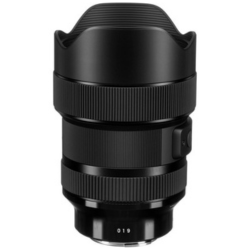
Sigma 14-24 Art
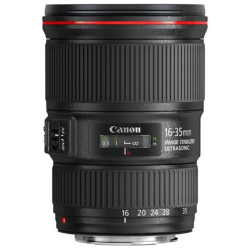
Canon EF 16-35
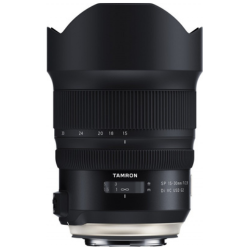
Tamron 15-30
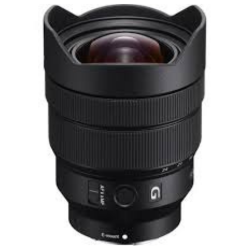
Sony FE 12-24
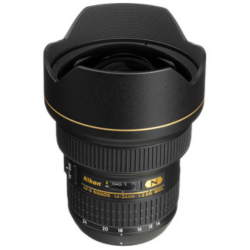
Nikon AF-S 14-24
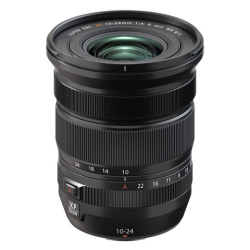
Fujifilm XF 10-24
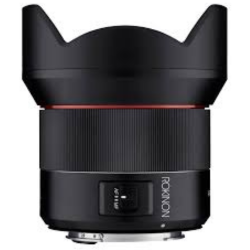
Rokinon 14
Detailed Reviews of the Top Wide-Angle Lenses
To help you make a good choice, check out our top picks for wide-angle lenses.
Top Overall Wide-Angle Lens for Landscape Photography

Canon RF 15-35
High-End Videography
Our Expert Opinion of the Canon RF 15-35mm
The Canon RF 15-35mm offers sharp image quality, vibrant colors, and excellent low-light performance with Image Stabilization, ideal for both photography and video.
At 1.3 kg (2.8 lbs), it’s heavy and pricey compared to other wide-angle lenses. Barrel distortion at 15mm can be corrected in post-processing.
In my experience, it delivers sharp, vibrant images with fast, quiet autofocus. The IS is great for handheld shots, especially in low-light conditions.
Compared to the Sony FE 16-35mm and Nikon Z 14-30mm, the Canon stands out with Image Stabilization, offering more stability and versatility.
|
Our Ratings
|
|
|---|---|
| Aperture Performance | ★★★★★ |
| Autofocus Speed | ★★★★★ |
| Sharpness | ★★★★★ |
| Build Quality | ★★★★★ |
| Bokeh Quality | ★★★★☆ |
| Versatility | ★★★★★ |
|
Key Specs
|
|
|---|---|
| Lens Type | Zoom |
| Image Stabilization | Yes |
| Filter Thread Size | 82mm |
| Mount Type | Canon RF |
| Build Material | Plastic |
| Weight | 840g |
Who’s the Canon RF 15-35mm For?
- Wedding Photographers: Perfect for capturing wide shots in low light with beautiful background blur and fast, reliable autofocus.
- Travel Photographers: Ideal for versatile, wide-angle shots while on the go, with image stabilization to reduce camera shake in various environments.
- Vloggers & Content Creators: Great for handheld, smooth, wide-angle footage, offering excellent image stabilization and clarity for dynamic shooting.
Who Should Avoid the Canon RF 15-35mm?
- Portrait Photographers: The wide focal length is not ideal for flattering portraits.
- Wildlife Photographers: Lacks the reach needed for distant wildlife shots.
Pros of the Canon RF 15-35mm
- Delivers crisp, detailed images with minimal vignetting.
- Quick and accurate autofocus for capturing fast subjects.
- Performs well in dim environments with clear, sharp results.
- Perfect for landscapes, architecture, and group shots.
- Easy to handle, with a matte finish that resists fingerprints.
Cons of the Canon RF 15-35mm
- Fuzzy corners when shooting wide.
- Feels front-heavy on the EOS R.
- Requires careful handling to avoid damage.
Sharp Wide-Angle Lens for Landscape Photography

Sony FE 16-35
Travel Photography
Our Expert Opinion of the Sony FE 16-35mm
The Sony FE 16-35mm offers exceptional sharpness, vibrant colors, and fast autofocus. Its compact design is portable, but it lacks Image Stabilization (IS).
In my experience, the lens excels in landscape and architectural photography. It’s sharp, fast, and delivers smooth bokeh, though some chromatic aberration requires post-processing.
Compared to competitors, the Sony offers superior sharpness but lacks IS like the Canon RF 15-35mm. The Nikon Z 14-30mm f/4 is more compact and affordable.
It improves on earlier versions with better sharpness and edge-to-edge clarity, making it a great choice for professionals needing reliable performance.
|
Our Ratings
|
|
|---|---|
| Aperture Performance | ★★★★☆ |
| Autofocus Speed | ★★★★☆ |
| Sharpness | ★★★★☆ |
| Build Quality | ★★★★☆ |
| Bokeh Quality | ★★★★☆ |
| Versatility | ★★★★★ |
|
Key Specs
|
|
|---|---|
| Lens Type | Zoom |
| Image Stabilization | No |
| Filter Thread Size | 82mm |
| Mount Type | Sony E |
| Build Material | Metal |
| Weight | 680g |
Who’s the Sony FE 16-35mm For?
- Professional Wedding Photographers: Perfect for capturing wide, sharp shots in low light with excellent bokeh and fast autofocus.
- Travel Photographers: Ideal for versatile, high-quality wide-angle shots, even in challenging conditions, thanks to its durability and fast aperture.
- Astrophotographers: Excellent for capturing crisp, wide night sky images with minimal distortion and fast performance at wide apertures.
Who Should Avoid the Sony FE 16-35mm?
- Portrait Photographers: Too wide for tightly framed, flattering portraits.
- Sports Photographers: May struggle with fast-moving subjects due to its wide focal length.
Pros of the Sony FE 16-35mm
- Sharp, detailed images with vibrant colors and minimal distortion.
- Quick & accurate autofocus with reliable Eye AF.
- Lightweight yet durable, perfect for long shoots.
- 70-200mm range with f/2.8 aperture for various styles.
- OSS allows sharp handheld shots at slower shutter speeds.
Cons of the Sony FE 16-35mm
- Lacks smooth manual control.
- Missing image stabilization despite size and cost.
- Notable edge distortion, even after post-processing.
Compact Wide-Angle Lens for Landscape Photography

Nikon Z 14-30
Real Estate Photography
Our Expert Opinion of the Nikon Z 14-30mm
The Nikon Z 14-30mm f/4 S offers a compact design, excellent sharpness, and minimal distortion. However, its f/4 aperture lacks low-light performance and Image Stabilization.
In my experience, the lens excels in landscape and architecture photography. Sharpness is consistent, and autofocus is fast and silent, but low-light performance is limited.
Compared to competitors, the Nikon is smaller, lighter, and more affordable than the Sony FE 16-35mm f/2.8 GM, but with a slower aperture and no IS.
It is more compact and offers better optical performance than older DSLR lenses, benefiting from the Z-mount’s faster autofocus and design.
|
Our Ratings
|
|
|---|---|
| Aperture Performance | ★★★★☆ |
| Autofocus Speed | ★★★★☆ |
| Sharpness | ★★★★★ |
| Build Quality | ★★★★☆ |
| Bokeh Quality | ★★★★☆ |
| Versatility | ★★★★★ |
|
Key Specs
|
|
|---|---|
| Lens Type | Zoom |
| Image Stabilization | No |
| Filter Thread Size | 82mm |
| Mount Type | Nikon Z |
| Build Material | Metal |
| Weight | 485g |
Who’s the Nikon Z 14-30mm For?
- Landscape Photographers: Ideal for wide-angle shots with sharpness and minimal distortion, perfect for travel and expansive views.
- Vloggers and Content Creators: Compact, weather-sealed, and great for smooth, wide-angle footage in various environments.
- Architecture Photographers: Excellent for wide architectural shots with minimal distortion and high clarity.
Who Should Avoid the Nikon Z 14-30mm?
- Portrait Photographers: Too wide for compressing subjects in flattering portraits.
- Macro Photographers: Lacks macro capabilities for close-up work.
Pros of the Nikon Z 14-30mm
- Easy to carry, perfect for travel and hikes.
- Delivers sharp images across the frame, rivaling prime lenses.
- Ideal for capturing detailed wide shots with minimal distortion.
- Reliable in various weather conditions.
- Covers multiple focal lengths, offering great value compared to prime lenses.
Cons of the Nikon Z 14-30mm
- Frequent de-centering in multiple copies of the lens.
- Performance varies greatly between units.
- Didn’t add much value over other lenses for travel photography.
Refined Wide-Angle Lens for Landscape Photography

Sigma 14-24 Art
Architectural Photography
Our Expert Opinion of the Sigma 14-24mm Art
The Sigma 14-24mm Art offers exceptional sharpness, minimal distortion, and a solid build. Its f/2.8 aperture allows low-light performance but is relatively bulky.
In my experience, the lens excels in landscape photography, delivering sharp details across the frame. However, its weight can be cumbersome for long hikes or travel.
Compared to the Sony FE 16-35mm and Nikon Z 14-30mm, the Sigma offers better optical quality and a faster aperture at a reasonable price.
It improves on the DSLR version with a more compact design, faster autofocus, and reduced flare, making it ideal for mirrorless systems.
|
Our Ratings
|
|
|---|---|
| Aperture Performance | ★★★★★ |
| Autofocus Speed | ★★★☆☆ |
| Sharpness | ★★★★★ |
| Build Quality | ★★★★★ |
| Bokeh Quality | ★★★★☆ |
| Versatility | ★★★★☆ |
|
Key Specs
|
|
|---|---|
| Lens Type | Zoom |
| Image Stabilization | No |
| Filter Thread Size | 82mm |
| Mount Type | Various |
| Build Material | Metal |
| Weight | 795g |
Who’s the Sigma 14-24mm Art For?
- Astrophotographers: Excellent for sharp, wide night sky shots with minimal distortion and great low-light performance.
- Landscape Photographers: Ideal for expansive, detailed landscapes with edge-to-edge sharpness.
- Urban & Architectural Photographers: Perfect for wide architectural shots with minimal distortion and high resolution.
Who Should Avoid the Sigma 14-24mm Art?
- Portrait Photographers: The wide focal length isn’t ideal for flattering portraits.
- Wildlife Photographers: Lacks reach and fast autofocus for distant wildlife.
Pros of the Sigma 14-24mm Art
- Sharp images with minimal distortion, perfect for tight spaces.
- Delivers crisp, detailed shots.
- Great for real estate, weddings, and corporate jobs.
- Quick and accurate focus for responsive shooting.
- Compatible with third-party filter holders for landscapes.
Cons of the Sigma 14-24mm Art
- Harsh purple flares in direct or indirect sunlight.
- Colors may need tweaking for accuracy.
- Less sharpness around the edges compared to similar lenses.
Affordable Wide-Angle Lens for Landscape Photography

Canon EF 16-35
Photojournalism
Our Expert Opinion of the Canon EF 16-35mm
The Canon EF 16-35mm offers excellent sharpness, Image Stabilization, and portability. Its f/4 aperture is slower than f/2.8 options but balances performance and size.
In my experience, the lens is sharp, quick, and great for landscapes. The IS helps with handheld shots, and flare control is solid, though f/4 limits low-light performance.
Compared to competitors, the Canon offers Image Stabilization, making it better for handheld shots. The Sony is pricier and heavier.
It is a compact, weather-sealed lens with Image Stabilization. It’s a more portable option than f/2.8 lenses while still providing excellent results.
|
Our Ratings
|
|
|---|---|
| Aperture Performance | ★★★☆☆ |
| Autofocus Speed | ★★★★☆ |
| Sharpness | ★★★★★ |
| Build Quality | ★★★★★ |
| Bokeh Quality | ★★★★☆ |
| Versatility | ★★★★★ |
|
Key Specs
|
|
|---|---|
| Lens Type | Zoom |
| Image Stabilization | No |
| Filter Thread Size | 77mm |
| Mount Type | Canon EF |
| Build Material | Metal |
| Weight | 615g |
Who’s the Canon EF 16-35mm For?
- Landscape Photographers: Wide field of view and sharpness for detailed landscape shots.
- Wedding Photographers: Fast aperture and versatile range for dynamic indoor and outdoor shots.
- Travel Photographers: Compact and versatile for capturing sweeping views on the move.
Who Should Avoid the Canon EF 16-35mm?
- Astro Photographers: f/4 aperture is too slow for night sky photography.
- Sports Photographers: Too wide and slow for fast-action sports.
Pros of the Canon EF 16-35mm
- Sharpness and contrast, especially in corners, make it ideal for landscapes and architecture.
- Handles high-contrast situations well, perfect for interior and landscape work.
- Enables sharp handheld shots in low light without needing a tripod.
- High-quality construction with a user-friendly lens hood and fluorine coating for easy cleaning.
- Suitable for real estate, landscapes, and other applications with its zoom range and filter compatibility.
Cons of the Canon EF 16-35mm
- Did not meet expectations for sharpness or clarity.
- The lens didn’t deliver the expected results for video work.
- Significant darkening at the corners, particularly at wide angles.
Reliable Wide-Angle Lens for Landscape Photography

Tamron 15-30
Adventure Photography
Our Expert Opinion of the Tamron 15-30mm
The Tamron 15-30mm offers excellent low-light performance with its f/2.8 aperture and Vibration Compensation (VC), but it’s bulky and heavy.
In my experience, the lens is sharp, even at the edges, and the VC stabilizes handheld shots well. It’s a solid choice for landscape and night photography.
Compared to the Sigma 14-24mm and Canon EF 16-35mm, the Tamron offers similar performance but adds VC at a more affordable price.
It improves autofocus, build quality, and VC over its predecessor, making it more reliable for handheld shots, low-light work, and harsh conditions.
|
Our Ratings
|
|
|---|---|
| Aperture Performance | ★★★★★ |
| Autofocus Speed | ★★★★☆ |
| Sharpness | ★★★★★ |
| Build Quality | ★★★★★ |
| Bokeh Quality | ★★★★☆ |
| Versatility | ★★★★★ |
|
Key Specs
|
|
|---|---|
| Lens Type | Zoom |
| Image Stabilization | Yes |
| Filter Thread Size | N/A |
| Mount Type | Various |
| Build Material | Metal |
| Weight | 1100g |
Who’s the Tamron 15-30mm For?
- Landscape Photographers: Wide focal length and fast aperture for sharp, detailed shots in varying light.
- Night Sky Photographers: Ideal for capturing stars with its wide aperture and low-light performance.
- Event Photographers: Image stabilization and wide zoom range for sharp, dynamic shots.
Who Should Avoid the Tamron 15-30mm?
- Street Photographers: Too bulky and heavy for casual street photography.
- Wildlife Photographers: Lacks reach and fast focus for wildlife.
Pros of the Tamron 15-30mm
- Delivers excellent image clarity across the frame, ideal for wide-angle and landscape photography.
- Offers stable handheld shooting, especially in low-light situations.
- Creates beautiful sun stars and manages flare effectively.
- Supports multiple filter systems for greater flexibility in landscape photography.
- Built to last with weather sealing, making it suitable for outdoor and challenging environments.
Cons of the Tamron 15-30mm
- Not ideal for travel or landscape photography due to size and weight.
- Curved lens element makes using filters difficult.
- Autofocus is loud, which is problematic for video.
Portable Wide-Angle Lens for Landscape Photography

Sony FE 12-24
Interior Photography
Our Expert Opinion of the Sony FE 12-24mm
The Sony FE 12-24mm G offers excellent sharpness, portability, and a constant f/4 aperture. However, it lacks Image Stabilization (IS) and performs less well in low light.
In my experience, the lens performs great for landscapes and architecture, delivering sharpness across the frame. However, its low-light performance is limited by the f/4 aperture.
Compared to competitors like the Canon RF 15-35mm and Tamron 17-28mm, the Sony offers a wider focal range, but lacks f/2.8.
It improves over the previous version with sharper optics and better color reproduction, especially at 12mm, making it ideal for wide-angle shots.
|
Our Ratings
|
|
|---|---|
| Aperture Performance | ★★★☆☆ |
| Autofocus Speed | ★★★★★ |
| Sharpness | ★★★★★ |
| Build Quality | ★★★★★ |
| Bokeh Quality | ★★★☆☆ |
| Versatility | ★★★★★ |
|
Key Specs
|
|
|---|---|
| Lens Type | Zoom |
| Image Stabilization | No |
| Filter Thread Size | 77mm |
| Mount Type | Sony E |
| Build Material | Metal |
| Weight | 565g |
Who’s the Sony FE 12-24mm For?
- Architectural Photographers: Ultra-wide zoom captures sharp, distortion-free images of buildings and interiors.
- Travel Photographers: Compact and lightweight for wide-angle shots on the go.
- Vloggers: Wide field of view and high image quality for dynamic videos.
Who Should Avoid the Sony FE 12-24mm?
- Portrait Photographers: Ultra-wide angle is not flattering for portraits.
- Sports Photographers: The wide field of view and f/4 aperture aren’t ideal for fast-moving subjects.
Pros of the Sony FE 12-24mm
- Delivers sharp, vibrant images with minimal distortion and excellent contrast.
- Quick and reliable autofocus, with accurate Eye AF for moving subjects.
- Weather-sealed and lightweight, offering durability for extended shoots.
- 70-200mm focal length suits various photography styles.
- Built-in OSS enables sharp handheld shots at slower shutter speeds.
Cons of the Sony FE 12-24mm
- The lens was consistently soft, requiring post-processing even with high-end cameras.
- Image quality didn’t meet expectations for a high-end lens.
- Broke after minimal use (10,000 shutter counts), with no support from Sony.
Astro-Ready Wide-Angle Lens for Landscape Photography

Nikon AF-S 14-24
Astrophotography
Our Expert Opinion of the Nikon AF-S 14-24mm
The Nikon AF-S 14-24mm delivers excellent sharpness, low distortion, and a fast f/2.8 aperture. However, it’s heavy, bulky, and lacks Image Stabilization (IS).
In my experience, the lens performs superbly in landscapes and astrophotography, offering sharpness and minimal flare. Its weight is noticeable but manageable for tripod shots.
Compared to the Sigma 14-24mm and Canon RF 15-35mm, the Nikon excels in sharpness, but lacks Image Stabilization and is heavier.
This lens retains its robust design and Nano Crystal Coat, offering excellent image quality. It’s heavier than newer models but remains top-tier for sharpness.
|
Our Ratings
|
|
|---|---|
| Aperture Performance | ★★★★★ |
| Autofocus Speed | ★★★★★ |
| Sharpness | ★★★★★ |
| Build Quality | ★★★★☆ |
| Bokeh Quality | ★★★★★ |
| Versatility | ★★★★★ |
|
Key Specs
|
|
|---|---|
| Lens Type | Zoom |
| Image Stabilization | No |
| Filter Thread Size | 112mm |
| Mount Type | Nikon F |
| Build Material | Metal |
| Weight | 970g |
Who’s the Nikon AF-S 14-24mm For?
- Landscape Photographers: Wide zoom and fast aperture for detailed landscape shots in all lighting.
- Astro Photographers: Wide aperture ideal for low-light, night sky photography.
- Event Photographers: Sharpness and clarity for capturing large groups and expansive scenes.
Who Should Avoid the Nikon AF-S 14-24mm?
- Portrait Photographers: Too wide for flattering portraits.
- Wildlife Photographers: Lacks the reach needed for distant wildlife.
Pros of the Nikon AF-S 14-24mm
- Delivers clear & detailed photos, even at wide apertures.
- Performs well in tough environments, resistant to sand, rain, & more.
- Durable & comfortable to use with smooth manual focus &aperture rings.
- Image stabilization works well for both stills & video.
- Reliable, sharp, & minimal distortion for various shooting situations
Cons of the Nikon AF-S 14-24mm
Nikon AF-S 14-24Noticeable chromatic aberrations, especially at the edges of the frame.- Strong distortion, resembling a fish-eye lens, made it unsuitable for general use, especially portraits.
- Sharpness was inadequate on high-resolution cameras like the Nikon D800E.
Travel-Friendly Wide-Angle Lens for Landscape Photography

Fujifilm XF 10-24
Backpacking Photography
Our Expert Opinion of the Fujifilm XF 10-24mm WR
The Fujifilm XF 10-24mm WR is a versatile, weather-resistant wide-angle lens with OIS. Its f/4 aperture limits low-light performance compared to faster lenses.
I used the lens for landscape and architecture photography. The OIS helped stabilize handheld shots, and the weather resistance proved valuable during unpredictable weather. Image quality was excellent.
Compared to the Sony 10-18mm and Tamron 11-20mm, the Fujifilm XF offers better weather-sealing, a wider zoom range, and is optimized for Fujifilm cameras.
The lens has improved image quality, OIS, and weather resistance compared to its predecessor, making it a more durable and versatile choice for outdoor and professional photography.
|
Our Ratings
|
|
|---|---|
| Aperture Performance | ★★★★☆ |
| Autofocus Speed | ★★★☆☆ |
| Sharpness | ★★★★★ |
| Build Quality | ★★★★★ |
| Bokeh Quality | ★★★☆☆ |
| Versatility | ★★★★★ |
|
Key Specs
|
|
|---|---|
| Lens Type | Zoom |
| Image Stabilization | No |
| Filter Thread Size | 72mm |
| Mount Type | Fujifilm X |
| Build Material | Metal |
| Weight | 410g |
Who’s the Fujifilm XF 10-24mm WR For?
- Landscape Photographers: Wide focal range and weather-sealing for detailed landscape shots in all conditions.
- Travel Photographers: Compact and versatile for wide-angle shots on the go.
- Vloggers: Wide view and image stabilization for smooth, dynamic video.
Who Should Avoid the Fujifilm XF 10-24mm WR?
- Wildlife Photographers: Too wide and slow for capturing fast-moving wildlife.
- Sports Photographers: Not fast or long enough for sports action.
Pros of the Fujifilm XF 10-24mm WR
- Delivers clear and detailed photos, even at wide apertures.
- Performs well in tough environments, resistant to sand, rain, & more.
- Durable & comfortable to use with smooth manual focus & aperture rings.
- Image stabilization works well for both stills and video.
- Reliable, sharp, & minimal distortion for various shooting situations.
Cons of the Fujifilm XF 10-24mm WR
- I noticed loose or rattling components.
- The lens mount and weather seal fell off, risking damage.
- Autofocus stopped working on the first day of use.
Budget-Friendly Wide-Angle Lens for Landscape Photography

Rokinon 14
Entry-Level Photography
Our Expert Opinion of the Samyang/Rokinon 14mm
The Samyang/Rokinon 14mm offers a wide field of view, fast f/2.8 aperture, and autofocus, making it great for landscapes and astrophotography, but lacks sharpness at edges.
I used it for astrophotography and landscapes, where it provided sharp stars with minimal coma. Autofocus was fast but struggled in low-light conditions. Lightweight and portable.
Compared to competitors like the Sigma 14-24mm and Sony FE 14mm, the Samyang is budget-friendly but compromises on build and performance.
It offers autofocus and a more compact design than its manual-focus predecessor, but it’s built with lighter materials, limiting durability for professional use.
|
Our Ratings
|
|
|---|---|
| Aperture Performance | ★★★★☆ |
| Autofocus Speed | ★★★☆☆ |
| Sharpness | ★★★★☆ |
| Build Quality | ★★★☆☆ |
| Bokeh Quality | ★★★☆☆ |
| Versatility | ★★★★☆ |
|
Key Specs
|
|
|---|---|
| Lens Type | Prime |
| Image Stabilization | No |
| Filter Thread Size | 77mm |
| Mount Type | Various |
| Build Material | Plastic |
| Weight | 550g |
Who’s the Samyang/Rokinon 14mm For?
- Who’s the Nikon Z 14-30mm?
- Astro Photographers: Wide aperture and focal length for detailed night sky shots with minimal distortion.
- Travel Photographers: Lightweight and compact for expansive landscape shots on the go.
- Vloggers: Wide angle and fast aperture for dynamic, low-light video.
Who Should Avoid the Samyang/Rokinon 14mm?
- Portrait Photographers: Ultra-wide angle isn’t suitable for flattering portraits.
- Macro Photographers: Not designed for close-up macro work.
Pros of the Samyang/Rokinon 14mm
- Delivers clear, sharp images, even wide open at f/2.8.
- Offers high-quality performance at a fraction of the cost of major brands.
- Perfect for landscapes, interiors, and tight spaces with minimal distortion.
- Encourages learning and offers precise control for better photography.
- Feels durable and comfortable with smooth focus adjustments.
Cons of the Samyang/Rokinon 14mm
- Difficulty achieving sharp focus, with images often soft and out of focus.
- A dark spot appeared in the center of photos, suggesting a lens defect.
- Sharp focus was nearly impossible for night shots.
Other Wide-Angle Lenses We Tested
We also took a look at the Olympus M.Zuiko Digital ED 7-14mm f/2.8 PRO, Sigma 12-24mm f/4 DG DN Art, and Laowa 12mm f/2.8 Zero-D, but they didn’t quite make our top picks of wide-angle lenses.
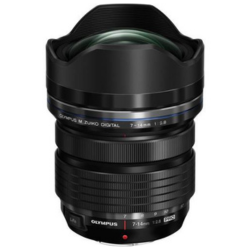
I tested the Olympus M.Zuiko Digital ED 7-14mm f/2.8 PRO and found its optical performance impressive, with sharp images and solid build quality.
However, I experienced issues with light reflections, especially at wider focal lengths, causing unwanted lens flares.
Additionally, I noticed some quality control problems with the lens mount, which was a bit concerning for a premium-priced lens.
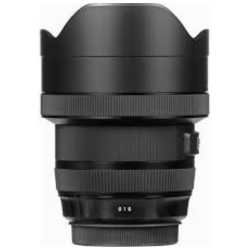
I tested the Sigma 12-24mm f/4 DG DN Art, and it delivers excellent sharpness and fast autofocus at an affordable price.
However, I found it has noticeable vignetting, especially when using filters, which could be an issue for some.
If you don’t rely on filters, it’s a great option for wide-angle landscape photography.

I tested the Laowa 12mm f/2.8 Zero-D, and while it controls distortion well, it’s not the sharpest lens, especially beyond 10 meters.
The lack of autofocus and stabilization makes it less versatile, particularly for video work.
However, for landscape and architecture photography, its wide field of view and zero distortion make it a solid, if somewhat limited, option.
What Wide-Angle Lenses Should You Avoid?
I’d recommend avoiding the Tokina AT-X 16-28mm f/2.8 Pro FX and the Pentax DA 12-24mm f/4 ED AL if you’re looking for reliable options for wide-angle lenses.
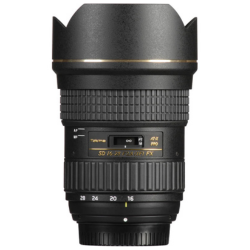
After testing the Tokina AT-X 16-28mm f/2.8 Pro FX, I found it had serious quality control issues.
I experienced focusing problems, including backfocusing that couldn’t be fixed even with adjustments.
Additionally, the lens felt heavy, had no filter compatibility, and I encountered reliability issues, including malfunctioning autofocus shortly after use.
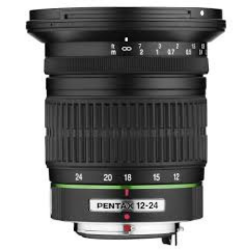
After testing the Pentax DA 12-24mm, I found that its resolution can be inconsistent, especially at the zoom extremes.
Chromatic aberration also affects image clarity, and it doesn’t perform well in backlight situations.
While it’s fine for casual use, it may not satisfy those seeking sharper, more detailed results.
Our Recommended Wide-Angle Lens

The Canon RF 15-35mm is my top recommendation because it combines excellent image quality, outstanding stabilization, and versatility for landscape photography.
Sharpness, fast autofocus, and wide focal range make it ideal for both wide vistas and detailed shots.
I appreciate its build quality, making it a reliable tool for any photographer.
Common Questions
How Does a Wide-Angle Lens Differ From a Standard Lens?
A wide-angle lens has a shorter focal length (typically between 14mm and 35mm for full-frame cameras) compared to a standard lens, which usually ranges from 35mm to 50mm.
This allows the wide-angle lens to capture a broader field of view, making it ideal for wide landscapes, architecture, and cramped spaces.
Standard lenses, on the other hand, provide a narrower perspective and are often used for general-purpose photography.
What Are the Advantages of Using a Wide-Angle Lens?
Wide-angle lenses allow photographers to capture more of a scene in a single frame, making them great for wide landscapes, architecture, and cramped spaces.
They also offer a greater depth of field, which helps keep both the foreground and background in focus.
What Is the “Distortion” Effect Commonly Associated With Wide-Angle Lenses?
Wide-angle lenses, especially those with very short focal lengths, can create distortion, where straight lines appear to curve, particularly near the edges of the frame.
This is often referred to as “barrel distortion.” While this can be used creatively, it can also be corrected in post-processing.
What Are Some Common Uses for Wide-Angle Lenses?
Wide-angle lenses are commonly used in landscape photography to capture expansive scenes, architectural photography to fit large buildings into the frame, and interior photography to capture tight spaces.
They’re also popular for creative portraiture, emphasizing subjects in the foreground against a vast background.
How Does Aperture Affect Wide-Angle Lenses?
The aperture of a wide-angle lens affects the depth of field. A smaller aperture (larger f-number, like f/16 or f/22) increases depth of field, keeping both near and distant objects in sharp focus.
A wider aperture (like f/2.8 or f/4) produces a shallower depth of field, isolating subjects from the background and creating a blurred effect (bokeh).
In Conclusion
I have looked at over 30 wide-angle lenses, and while there are a number of strong contenders, the overall best performer is the Canon RF 15-35. It excels in sharpness, image stabilization, and versatility.
Great performances also come from the Sony FE 16-35 with its exceptional build quality and fast autofocus, and the Nikon Z 14-30, praised for its compact size and wide focal range.
I’m currently testing a number of new wide-angle lenses at our Centurion facility.
I’m working with models from top brands like Canon, Sony, and Nikon. I look forward to sharing the results soon!



